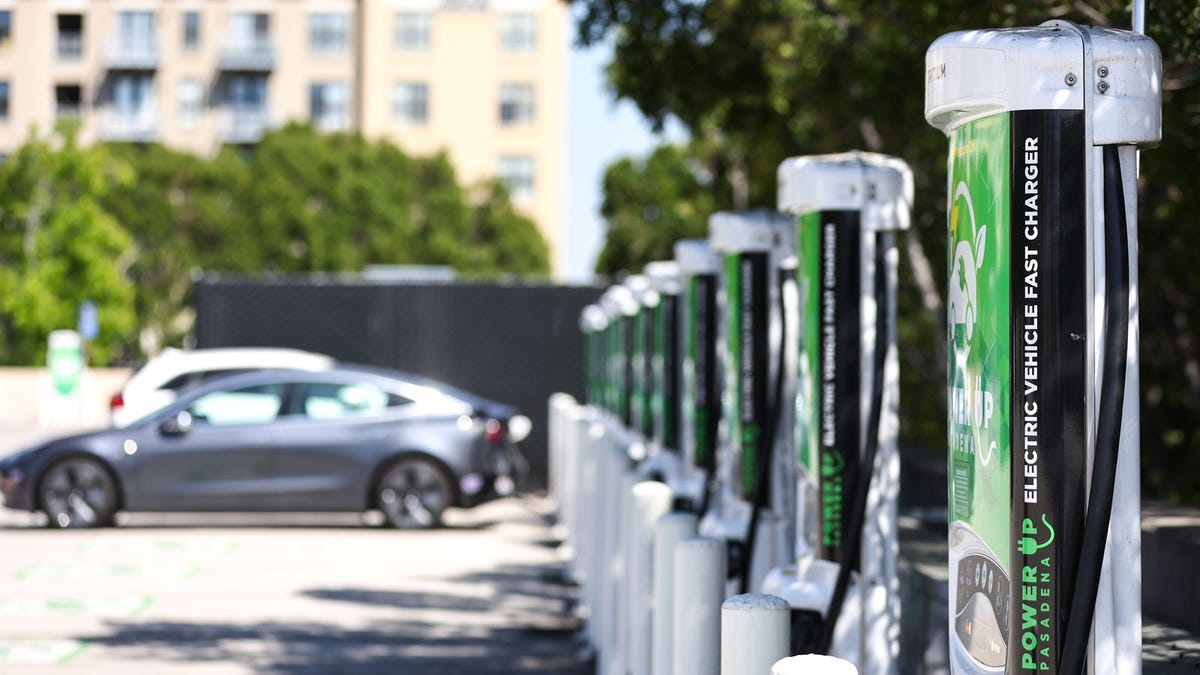Electric Charging Infrastructure Can’t Keep Up With EV Demand

EV drivers aren’t as happy with charging ports as they were in the past. Photo: Mario Tama (Getty Images)
Electric vehicles are finally beginning to take off here in the U.S. There’s a barrage of genuinely desirable models out there that can easily get you from A to B in clean, emission-free style. But sadly, while the offering of electric vehicles is improving, the same can’t be said for the charging infrastructure that keeps them on the road.
According to a new study from analysts at J.D Power, consumer satisfaction with the EV charging here in the U.S. is dropping as more people clamor for fewer plug-in points.
The study found that despite the number of charging sites in the U.S. rising, thanks to expansion of Tesla’s supercharger network and the Electrify America chargers, users were increasingly annoyed by the service they got at charging points.
This was particularly prominent in places like California, where the growth in EV numbers is far outpacing improvements in charging across the state.
Charging ports in California are in high demand. Photo: Mario Tama (Getty Images)
G/O Media may get a commission
Year-round basics
Uniqlo Summer Sale
Basics you don’t wanna miss
Uniqlo’s summer sales are not to be missed. The whole sale is killer to stock up on the basics Uniqlo is known for—subtle colors, classic silhouettes, and a dress up-or-down vibe.
“Public charging continues to provide challenges to overall EV adoption and current EV owners alike,” said Brent Gruber, executive director of global automotive at J.D. Power.
“Not only is the availability of public charging still an obstacle, but EV owners continue to be faced with charging station equipment that is inoperable.
“Stations need to be added to areas where there are currently gaps in heavily traveled routes and in high-density areas for people who don’t have access to residential charging, but most importantly, designed with things for users to do while charging – regardless of the use case. Then, we need to make sure those stations are reliable.”
Of the chargers that EV drivers could access, the study found that most people were pretty happy with the offering in their area. However, many called for improved maintenance at sites here in America. The J.D. Power study said:
“The industry needs to do a better job of maintaining existing charging stations. The study finds that one out of every five respondents ended up not charging their vehicle during their visit. Of those who didn’t charge, 72% indicated that it was due to the station malfunctioning or being out of service.”
Tesla drivers seem to be the happiest with their charging options. Photo: Stefani Reynolds/AFP (Getty Images)
Issues such as this appeared to plague level two chargers in the U.S., which will refill your electric car at a slower rate than a dedicated DC charger. At those ports, most users were happy with the price and convenience such sites offered.
According to the survey, users of DC fast-chargers were often taking a long, planned out road trip. As such, they were likely to plot a route that stopped at such points to ensure an easier journey.
Gruber added: “Although fast charging is seemingly getting faster by the day, to expedite the charging process vehicles will need to accommodate the newest ultra-fast chargers.
“Currently, only a handful of vehicles can take advantage of the fastest charging speeds. And no matter how fast their vehicle charges, EV owners still indicate they need more options for things to do during each charging session to enhance convenience and fill the down time.”



